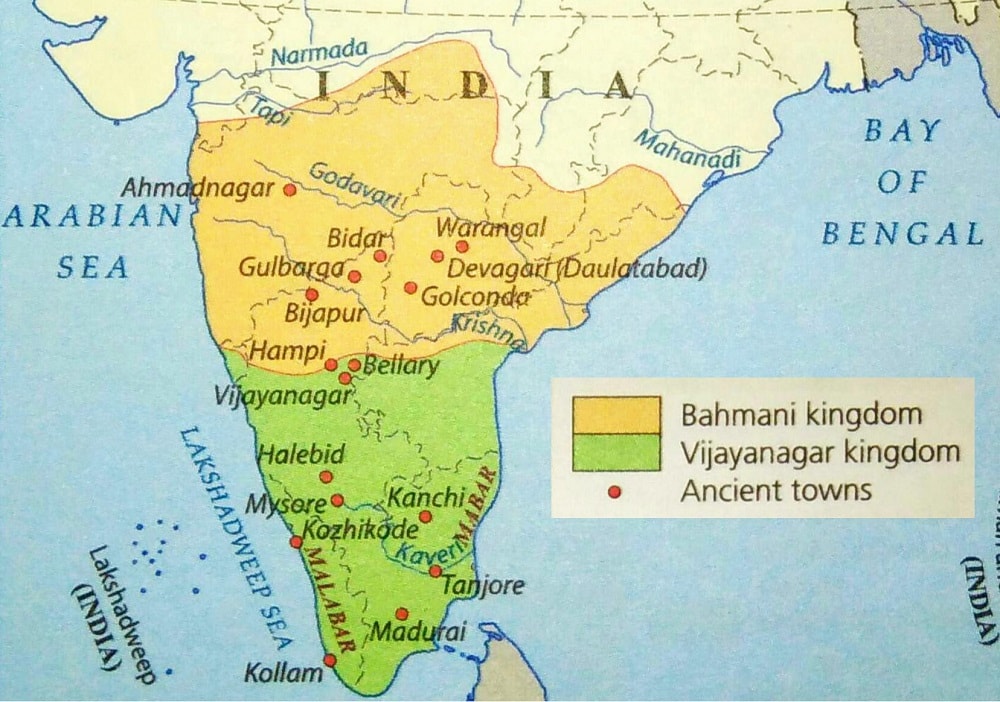
The Bahmani Dynasty: Unraveling the History of Deccan Rulers in India
Introduction
The history of the Deccan region in India is replete with tales of powerful dynasties that shaped the socio-political landscape. Among them, the Bahmani Dynasty stands as a significant chapter in the annals of Indian history. From its rise in the 14th century to its eventual decline in the 16th century, the Bahmani rulers left an indelible mark on the Deccan with their political prowess, cultural patronage, and architectural splendor. In this blog post, we embark on a journey through the captivating history of the Bahmani Dynasty, unraveling the legacy of these influential Deccan rulers.
I. The Origins of the Bahmani Dynasty
The Bahmani Dynasty emerged in the Deccan region following the disintegration of the Delhi Sultanate. This section delves into the circumstances that led to the establishment of the Bahmani Sultanate, tracing its origins to the reign of Ala-ud-Din Bahman Shah. We explore the early years of the dynasty, including the consolidation of power, territorial expansions, and the political and cultural influences that shaped its formation.
II. Bahmani Sultanate: Political Administration and Governance
The Bahmani Sultanate was known for its efficient administrative system, religious tolerance, and centralized governance. This section examines the political structure and governance of the Bahmani Sultanate, including the role of the sultan, the nobility, and the administrative machinery. We also explore the religious policies implemented by the rulers, which fostered an environment of multiculturalism and attracted scholars, artists, and intellectuals from various backgrounds.
III. Cultural Patronage and Architectural Marvels
The Bahmani rulers were patrons of art, literature, and architecture, and their reign witnessed a flourishing of cultural pursuits in the Deccan. This section explores the patronage extended by the Bahmani Dynasty to scholars, poets, musicians, and artists. We delve into the architectural marvels commissioned by the Bahmani rulers, such as the famous Gol Gumbaz, Bidar Fort, and the Charminar. The unique architectural styles, fusion of influences, and the cultural significance of these structures will be highlighted.
IV. Bahmani Dynasty and the Arts
The Bahmani Dynasty played a pivotal role in the promotion of literature, music, and other artistic expressions in the Deccan. This section delves into the literary contributions of Bahmani rulers and the flourishing of the Decani Urdu language. We also explore the patronage of music and dance, with the development of unique musical traditions and the establishment of cultural academies. The artistic achievements of the Bahmani Dynasty and their impact on subsequent Decani artistic traditions will be examined.
V. Relations with Other Dynasties and Challenges Faced
The Bahmani Dynasty’s reign was marked by both alliances and conflicts with neighboring kingdoms and empires. This section explores the diplomatic relations and military engagements of the Bahmani rulers, including their interactions with the Vijayanagara Empire, the Sultanate of Gujarat, and the Bahmani-Bijapur rivalry. We also examine the internal challenges faced by the dynasty, such as factionalism, succession disputes, and economic pressures, which ultimately contributed to its decline.
VI. The Decline of the Bahmani Dynasty
The Bahmani Dynasty faced a gradual decline in the 16th century, leading to the disintegration of the Sultanate into smaller successor states. This section sheds light on the factors that led to the downfall of the Bahmani Dynasty, including regional revolts, external invasions, and the rise of local governors. We also discuss the legacy of the Bahmani Dynasty and its impact on the subsequent history of the Deccan.
Conclusion
The Bahmani Dynasty, with its political acumen, cultural patronage, and architectural brilliance, left an indelible mark on the Deccan region of India. From its origins as a powerful Sultanate to its eventual decline, the Bahmani rulers shaped the history and cultural landscape of the Deccan. Exploring their legacy allows us to appreciate their contributions and understand the complex dynamics of medieval Indian history.
